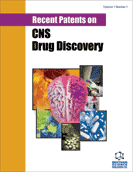Abstract
Spinal cord injuries devastate the lives of those affected. Normally, acute injury leads to chronic injury in the spinal cord, although this has a variable impact on normal sensory and motor functions. Currently the only drug used to treat acute spinal cord injury is methyl-prednisolone, administered in order to prevent secondary inflammatory neural damage. Thus, it is time that alternative and complementary pharmacological, cell and gene therapies be developed. In order to achieve this, several approaches to stimulate spinal cord repair must be considered. Indeed, the main lines of research that have been established in different animal models of spinal cord regeneration are now beginning to produce encouraging results. Several patents have been derived from these studies and hopefully, they will lead to the development of new treatments for human spinal cord injuries. Here is presented a review of the main patents that have been generated by this research, and that can be classified as: Patents involving the use of different factors that promote axonal regeneration. Patents aimed at overcoming the activity of glial scar inhibitory molecules that hinder axonal regeneration. These approaches can be further subdivided into those that block Nogo and other myelin components, and those that involve the use of chondroitinase against glial scar chondroitin sulphate proteoglycans. Patents concerning glial cell therapy, in which glial cells are used to mediate axonal repair in the spinal cord (Schwann cells, olfactory ensheathing cells or astrocytes).
Keywords: Spinal cord repair, central nervous system regeneration, axonal regeneration, neurotrophic factors, glial scar molecules, glial cell therapy
 17
17





















